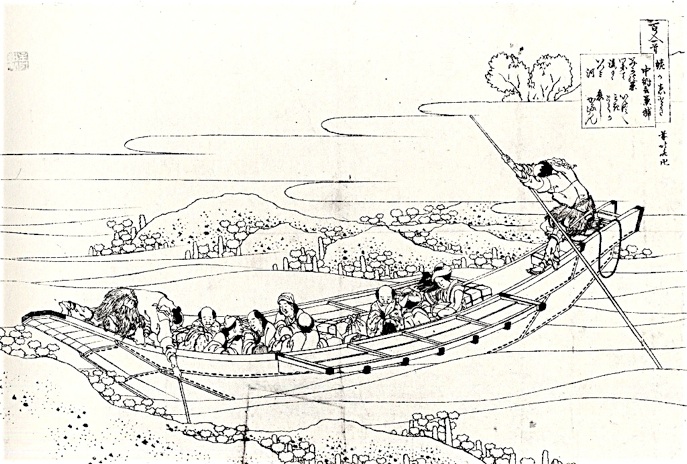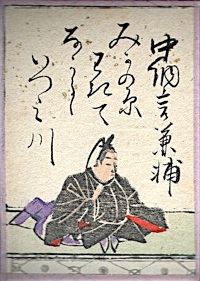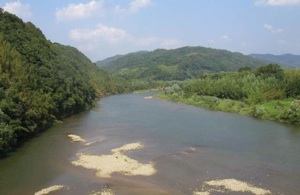中納言兼輔

みかの原
わきて流るる
泉川
いつ見きとてか
恋しかるらむ
ちゅうなごんかねすけ
みかのはら
わきてながるる
いづみがわ
いつみきとてか
こいしかるらん
Fujiwara no Kanesuke
Over Mika's plain
Springing up and flowing long,
Izumi River breaks away.
When did we ever meet then
That I miss her so?
Hokusai
Fujiwara no Kanesuke (877 - 933), also known as Chunagon Kanesuke or Tsutsumi Chunagon (the Counsellor of the Levee - his residence being near the embankment of the Kamo River), was the brother of Sadakata (poem 25). His granddaughter was Murasaki Shikibu (poem 57). He belongs to the Thirty-Six Immortal Poets. His house was a literary salon frequented by Tsurayuki (poem 35) and Mitsune (poem 29). His poems first appeared in the Kokinshu.
This commentary by Joshua Mostow in his ‘Pictures of the Heart’ cannot be surpassed:
“The poem is a skillful example of the use of a ‘preface’ (jo), poetic place-name (uta-makura), and pivot words (kake-kotoba). Mika-no-Hara is a place-name from the Kyoto area; mika literally means ‘jars’ or ‘urns’. The verb wakite means both ‘to bubble up, spring, gush forth’ and ‘to divide’. The poem is centered, however, on the pivot word idzumi. As a common noun, idzumi is a ‘spring’, thus connecting with the verb wakite. The Izumi River is an actual river, today called Kizu-gawa. The whole first three lines serve as a ‘preface’ to itsu miki, ‘when did I see’, where ‘when see (itsu mi) echoes ‘Izumi River’.”
On the drawing above a ferry boat is setting off for the other bank of the Izumi River.



Izumi River (Kizu gawa)

